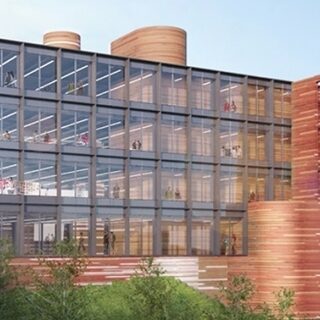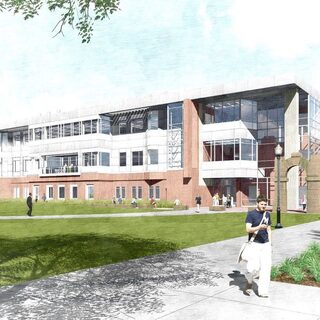Carnegie Mellon and Tata Consultancy Services Break Ground on Joint Research Facility
Carnegie Mellon University is partnering with Tata Consultancy Services to create TCS Hall in Pittsburgh. Designed by Skidmore, Owings & Merrill, the 48,000-sf joint facility will provide research labs, academic and administrative offices, instructional space, an innovation courtyard, and a robotics area. TCS Hall will support collaborative research in artificial intelligence, automation, data analytics, cybersecurity, robotics, and autonomous vehicles.










